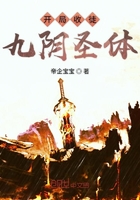The truths demonstrated in this proposition cannot be denied. They fortify as certain that a properly proportioned mixture in water of an infusion of nut-galls or gallo-tannic acid and sulphate of iron, with isinglass as the vehicle to bold the particles in a state of suspension, if written with on good paper and allowed to dry without blotting, in a short time becomes encased or enveloped in such vehicle, which is thereby rendered substantially insoluble and absolutely prevents any extensive oxidation. Also, as a further consequent result, there is chemically created an unchangeable and continuing black color more permanent and durable than the substance on which it appears.
With a sample of standard commercial chemical writing fluid, write on "linen" paper without blotting it; in thirty hours, if exposed to the air and from three to five days if kept from it, the writing should have assumed a color bordering on black; it becomes black at the end of a month under any conditions, and so continues for a period of about five or six years, when if examined under a lens of the magnification of ten diameters, there will be a noticeable discoloration of the sides or pen tracks which slowly spreads during a continuing period of from ten to fifteen years, until the entire pen marks are of a rusty brown tint. A species of disintegration and decay is now progressing and when approximately forty years of age, has destroyed all ink qualities.
If, however, "chemical writing fluid" is first treated by exposure to the fumes of an ammoniacal gas, a "browning" of the ink occurs, not only of the pen tracks but of the entire ink mark. If examined now with a lens, the ink is found to be thin enough to permit the fibre of the paper to be seen through it, thus indicating artificial age. Furthermore, if a 20 per cent strength of hydrochloric acid be applied, the "added"color (usually a blue one) is restored to ITS original hue; alike experiment on "time" aged ink gives only the yellow brown tint of pure gall and iron combinations, the "added" color having departed caused by its fugitive characteristics. Again, if a solution of chlorinate of lime or soda be applied, the ink mark is instantly bleached, where in the case of honest old ink marks, it takes considerable time to even approximate a like result.
To confirm the chemical tests which may be employed in the determination of the artificial aging of ink marks, photographs made by permitting light to transmit through the paper and to interfere with its rays by filtering them through a "color" screen containing orange and some green, will indicate the presence of a fugitive substance in the ink, usually the "added" color employed in its manufacture.
The process of bleaching or "removal" of ink marks from paper is frequently employed in the attempted eradication of words or figures and the substitution of others on monetary instruments, commonly called "raising." Its purpose is usually a criminal one and some observations as to the modus operandi and its chemistry are not out of place here.
Ink marks made with a compound consisting of the combination of iron and an infusion of galls or its equivalent (a tanno-gallate of iron ink), as treated with certain chemicals, change from a compound with color to a chemical compound, with no color. Nothing has in fact been absolutely removed or eradicated, but it is a mere change of form, a sort of re-arrangement of the particles, the ingredients which formed the original color being still present, but in such a condition that they are invisible to the eye. A restoration of the invisible ink marks so that they can be observed, becomes possible by the use of chemical reagents and is the reverse of the one of erasure or bleaching, and changes the constituents again into a compound which has color from the one which had none. It does, not, however, reproduce the exact composition originally existing. Such a reagent simply goes to the basis of the material as first used, takes up what was left and reforms the particles sufficiently to make them abundantly recognizable. An apt illustration of these chemical changes of color is found in what is known as the phenolphtalein test solution, which is colored deep purplish-red by alkali hydrates or carbonates, and then by the addition of an acid rendered colorless, to be again reddened by an over-plus of the alkali and so on ad infinitum.
A popular material for the purpose of ****** chemical erasures is chlorinated lime or soda, which becomes more active by first touching the ink mark to be removed with a one half strength solution of acetic acid; this hastens the liberation of chlorine gas, THE active agent which causes the "bleaching"to take place. Hydrogen peroxide, also a bleaching compound, is less rapid in its action than chlorinate of soda; the same may be said of combinations of oxalic and sulphurous acids.
The most effective re-agent for the restoration of a chemically "bleached" iron ink mark is the sulphide or sulphuret of ammonia (it has several names). This penetrating chemical blackens metals or their salts, whether visible or not, if brought together. It must not be used by direct contact, the best and safest plan being to place a quantity in a small saucer, to be set on the floor of a closed box; to fasten to the box lid the specimen to be operated on; in this way the restoration is due to the fumes of the chemical and a possible danger of destruction of the specimen much lessened, especially if the marks are very light or delicate ones. The restoration of color under particular conditions may also be obtained by treatment with tannic acid, potassium ferro-cyanide (acidulated) or a weak solution of an infusion of galls.















